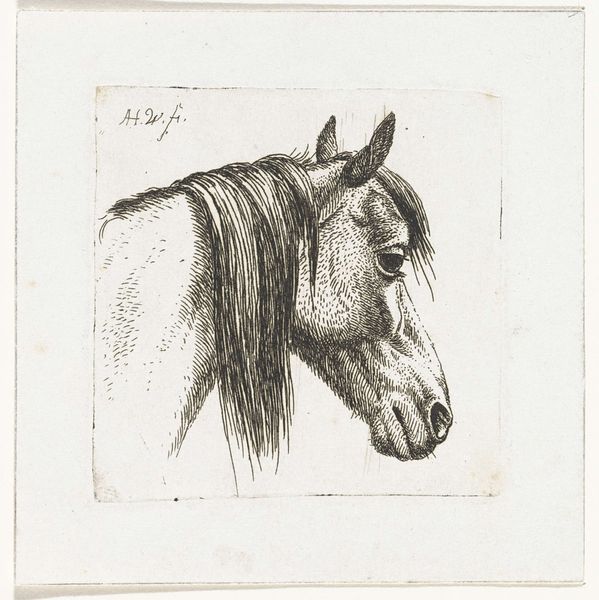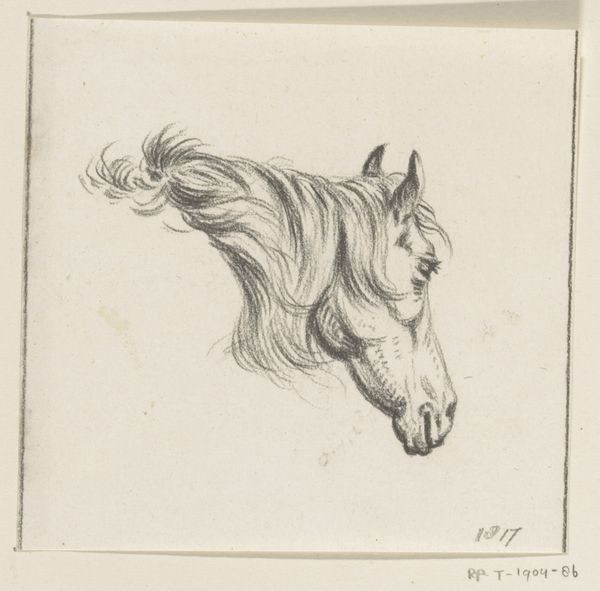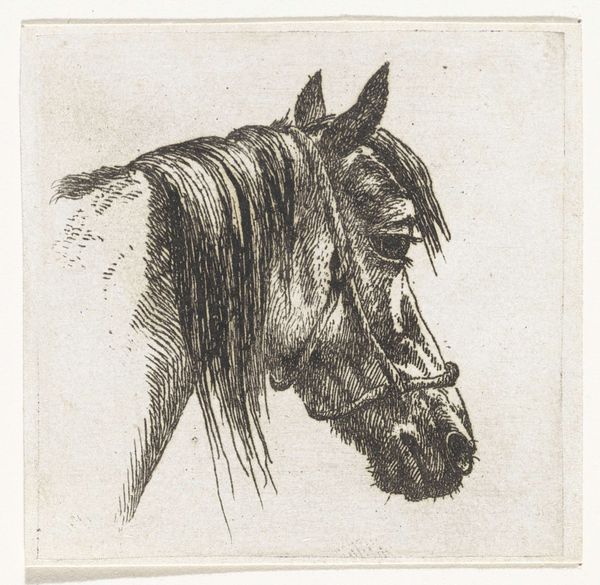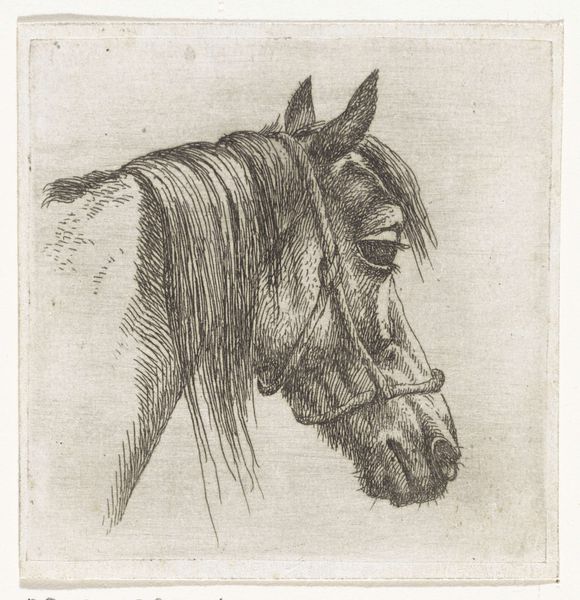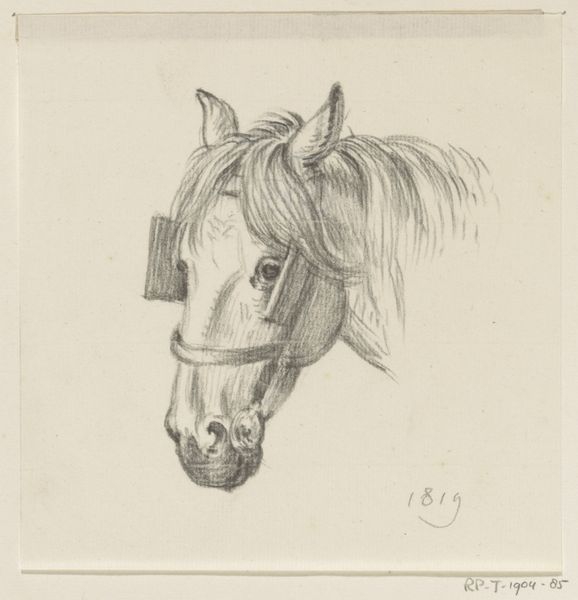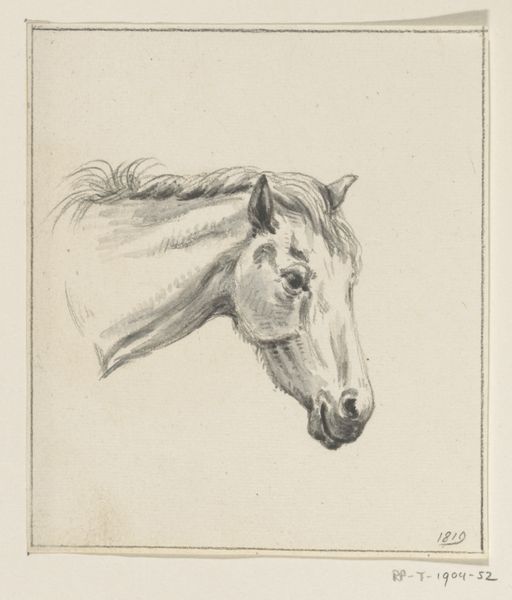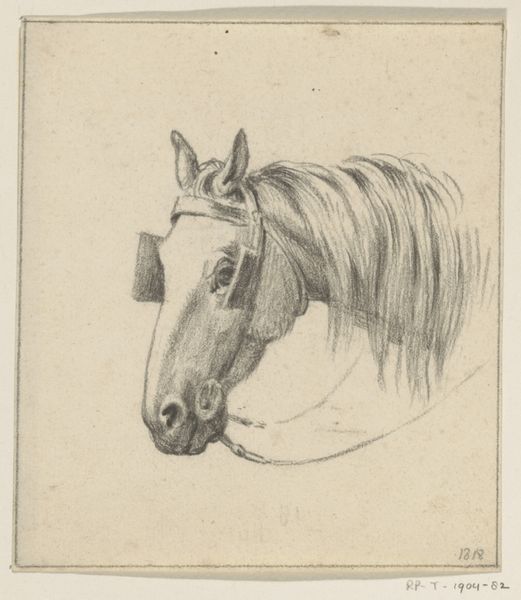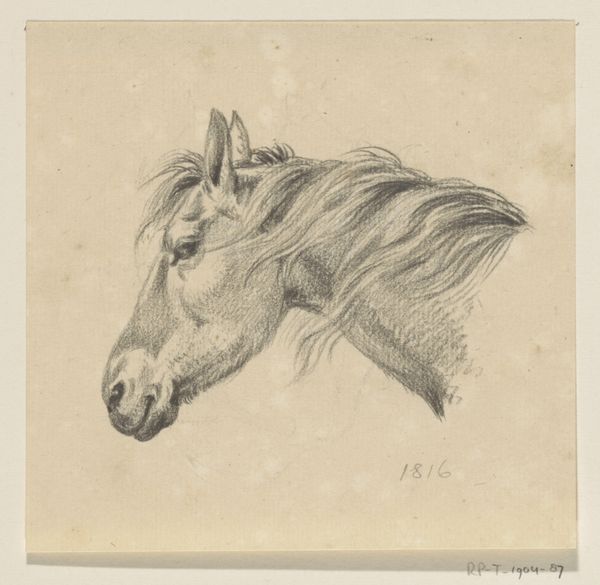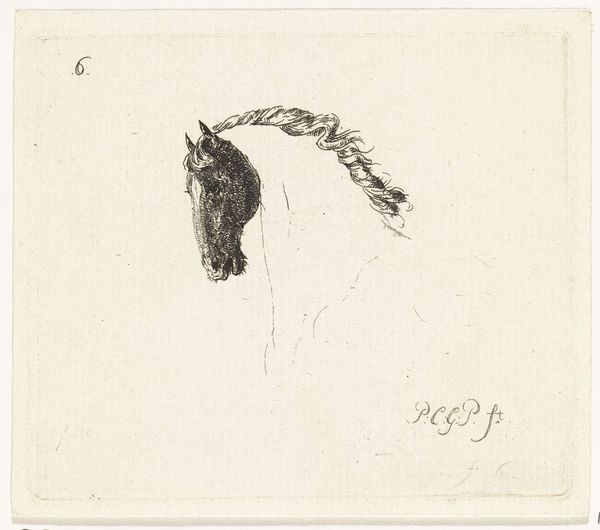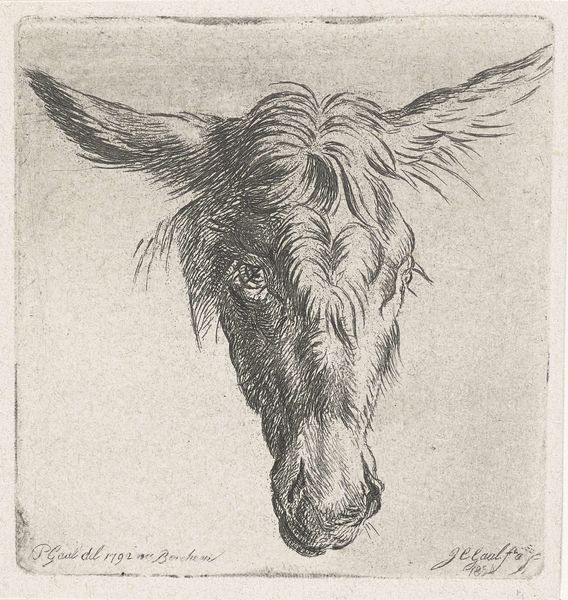
drawing, pencil
#
portrait
#
pencil drawn
#
drawing
#
toned paper
#
pencil sketch
#
pencil drawing
#
pencil
#
horse
#
portrait drawing
#
realism
Dimensions: height 105 mm, width 115 mm
Copyright: Rijks Museum: Open Domain
Curator: This lovely pencil drawing is called "Paardenhoofd," or "Horse's Head," by Ernst Willem Jan Bagelaar. It was created sometime between 1798 and 1837. Editor: Right, a simple head and neck portrait, sketched in exquisite detail... There's something haunting about it, actually. The horse feels so alive, but there’s a starkness to the lines that suggests a moment captured and then gone. Curator: I find that the realism—the clear outline and shading of the muscles, for example—evokes a long tradition of equestrian portraiture and its symbolic connection to power and nobility. Notice also how Bagelaar captures the way light plays across the animal's face. Editor: Definitely. It reminds me of studies of classical sculpture, those intense, close-up details. Is it just me, or is there a little melancholy in that eye? You know, that faraway look... perhaps it reflects the uncertainty of the era during which it was conceived. Curator: I agree. Horses have always been laden with cultural meaning. Consider the psychological weight carried by horses throughout history: from war steeds to symbols of pastoral serenity, these animals bear burdens that we have projected onto them. It might reflect Bagelaar’s perception of the Dutch national spirit. Editor: So true, a mirror reflecting the spirit of its time! But beyond all the scholarly musings, it's just a beautifully observed creature. Look at how those sketched lines capture the vitality of the animal! I can almost feel the breeze in its mane. The choice to set it against such an almost-blank backdrop only intensifies the intimacy of the portrait. I can see in the horse's eye the freedom it feels roaming wild through nature... the very epitome of nature! Curator: Precisely, that blankness makes it feel both timeless and immediate. Perhaps this work asks us to remember our profound bond with animals, as images echoing human and animal connection over time? Editor: That's wonderful... A conversation with history, told in simple, elegant lines! Curator: Well, that image offers us much food for thought. I do hope you’ve found this encounter insightful.
Comments
No comments
Be the first to comment and join the conversation on the ultimate creative platform.
